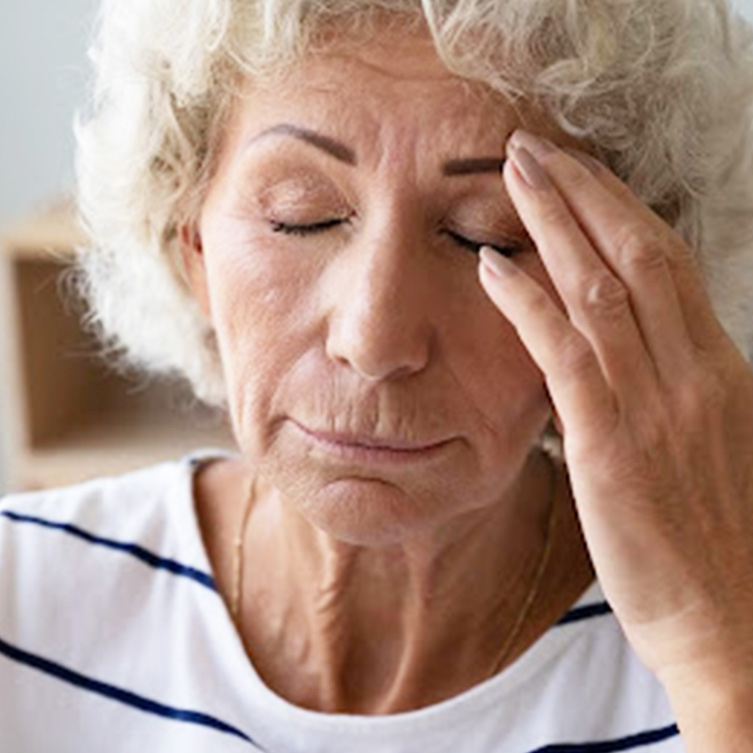Mobility Solutions for Patients Dealing with the Aftermath of a Stroke in Houston
A stroke occurs when the blood supply to part of the brain slows down or is interrupted, preventing tissue in the brain from getting the oxygen and nutrients that it needs. Within minutes, brain cells begin to die. Prompt treatment of a stroke is crucial and early action can reduce brain damage. Contact us for more information

Helpful Products
A stroke can cause temporary or permanent disabilities, depending on how long the brain lacks blood flow and which part is affected.
Complications can include:
- Paralysis or loss of muscle movement. Paralysis may be on one side of the body, or lose control of certain muscles, such as those on the side of the face or one arm.
- Difficulty talking or swallowing. A stroke can affect the body’s ability to control the muscles in the mouth and throat, making it difficult for patients to talk clearly, swallow or eat. Patients may also have difficulty with language, including speaking or understanding speech, reading or writing.
- Memory Loss and Thinking Difficulties. Patients who suffer from a stroke can sometimes experience some memory loss. Other may have difficulty thinking, reasoning, making judgements or understanding concepts.
- Emotional Problems. Patients who have suffered a stroke can have a difficult time controlling their emotions and can develop depression.
- Pain. Pain and numbness may occur in the parts of the body affected by the stroke. Ex: loss of feeling in the left arm may result in discomfort or tingling sensations in the left arm.
- Behavioral changes and the ability to take care of themselves. Patients who suffer a stroke may become more withdrawn. They may need help with grooming and daily living activities.
LiveWell has a wide range of mobility products that can support independent living for patients who have suffered a stroke.
LiveWell Products that can assist with Activities of Daily Living:
Bathroom remodeling to include a zero-entry shower, grab bars, and wheelchair accessible vanities
- Having a stroke can change the way that a patient goes about their simple daily activities. Modifications to the bathroom will be important to both the patient and the caregivers. Installing a raised toilet seat with arms can make the transfer to the toilet easier. A zero-entry shower that has no threshold is very helpful because it removes any tripping hazard. Wheelchairs can also be rolled into the shower allowing for a shorter distance of transferring the patient. Wheelchair accessible vanities can be installed that allow for the wheelchair to roll underneath and the patient is able to safely use the sink without leaving their chair.
Grab Bars
- Patients can begin to experience muscle weakness or paralysis following a stroke. Grab bars are critical in making sure that the patient does not fall again. Grab bars help to sustain balance and prevent falls and injuries and should be installed in the shower and beside toilets. Standing grab bars are a great solution beside beds and when there are glass shower doors and no good location for mounting a traditional grab bar.
Stairlifts
- Moving around after a stroke in a home with stairs can be very difficult. Oftentimes, certain areas of the home become off limits because they simply aren’t accessible. Navigating the stairs and maintaining accessibility to all rooms of the home does not have to be a difficult process. Adding a stairlift to the home removes any mobility barriers for a patient living with the effects of a stroke that is still able to walk on their own. The stairlift moves on a track up and down the stairs. The seat has a seatbelt and is controlled by a device on the arm rest.
In-home elevator
- When a patient has had a stroke and is no longer able to walk on their own without assistive devices or requires constant use of a power chair, it may be time to consider adding an in-home elevator. There are several types of elevators that can be used. Standard residential elevators require a pit and an elevator shaft. LiveWell’s innovative through-the-floor home lifts require no elevator shaft and can be freestanding. An inclined or vertical platform lift is perfect for accessibility for wheelchair users. Vertical platform lifts can be used indoor or outdoor and have an open platform. They take up less space than a ramp.
Doorway Widening
- A lot of times, people never stop to consider their doorways when they are considering making accessibility modifications. It is so important to consider the size of the patient’s assistive devices when thinking about expanding the doorways in the home. The standard size of an interior door ranges from 22 to 30 inches. The minimum recommended door width for those with assistive equipment that will need to pass through it is 36 inches.
Ramps
- Stroke patients can often have a harder time walking or are confined to a wheelchair. This can make entering and exiting the home a problem if there are stairs or uneven, rough terrain. A ramp can remove any barriers to entry and provide a safer way to enter and exit. Ramps come in all shapes and sizes and are custom fitted to the home. They can be made out of wood or metal, depending on the patient’s needs.
Lift Chairs
- Lift Chairs are used for patients who struggle to raise and lower themselves from a seated position without help. They ensure that patients can sit and stand in a safe, controlled manner without a caregiver’s help to reduce the risk of falls or related injuries. This also helps to enhance the patient’s sense of independence and normalcy. The comfort and safety aspect of the chair allows for patients to be comfortable while maximizing pain relief.
- Not only are lift chairs a great addition with many benefits for the patient, it’s also great for the caregivers as well. This reduces the need to help someone in and out of a chair. It also provides caregiver peace of mind knowing that the risk of injury to the user from standing and sitting is minimized.
Power Scooters or Chairs
- Leading an active life is of the utmost importance for patients who have suffered a stroke, and power scooters can help them do just that in a safe and stress-free way. Power scooters are battery powered mobility devices that allow patients to travel to places without having to walk or, if close by, drive. Vehicle lifts or hitch-mounted lifts can be used to transport the power scooter or chair wherever needed.
- There are a variety of power scooters available and the type needed is based on various factors: where and how patients plan on using their scooter, specific mobility needs, and budget.
While a stroke can cause temporary or permanent disabilities, LiveWell and our wide variety of products can help to ensure that mobility isn’t an issue. Our products and services can make any room in the home safer and more accessible for those that have suffered a stroke. Contact us today to schedule a free in-home consultation. Our team of experts can evaluate the home and provide a thorough proposal of all available options. Click here to contact us for more information.


